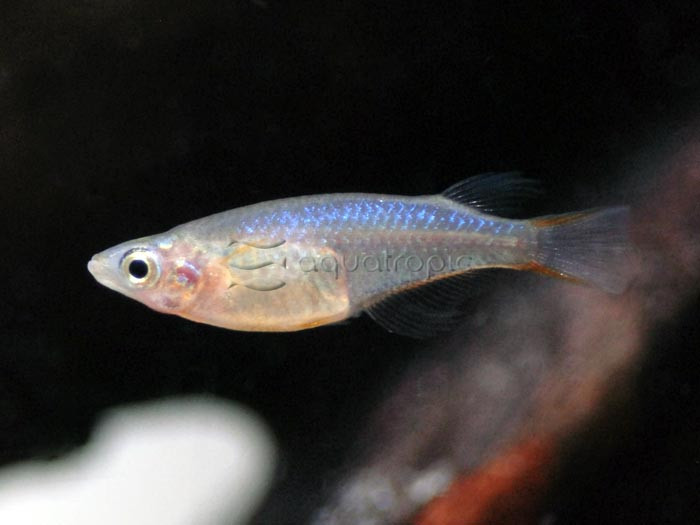Daisy’s Ricefish (Oryzias woworae)

Ricefishes are generally not a familiar group to aquarists, and at first glance it would be easy to mistake them for a killifish or tetra. But, actually, this small family (Adrianichthyidae) is more closely related to the half-beaks and flyingfishes. There are a little over thirty ricefish species which can be found across much of Southeast Asia, from Japan to Indonesia.
The most famous member of this group is Oryzias latipes, a rather drab Japanese species known as the Medaka. It has been used extensively in experimental studies, and holds the distinction of being the first vertebrate to mate in space. Arguably the most visually appealing ricefish is a gorgeous blue and red species which was scientifically described in 2010, not long after it made its debut in the aquarium trade.
Daisy’s Ricefish (Oryzias woworae) is named for crustacean researcher Daisy Wowor, who collected the specimens used to describe the species. These originated from a small stream on the island of Muna, which lies just off the southeastern arm of Sulawesi in Indonesia. This small island is likely the only place that Daisy’s lovely blue ricefish can be found, but, thankfully, this rare species is exceptionally easy to breed in captivity and is now commonly available.
As with all ricefishes, females externally hold onto their eggs for a period of time after they have been fertilized. This can be seen in an aquarium, as there will be a small clump of 10-20 eggs dangling from the genital pore like a tiny grapelike cluster of caviar. These are soon detached onto any available plants, where they will continue their development, eventually hatching into free-swimming fry within a week or two.
O. woworae is a wonderfully peaceful addition to a calm community tank, but this pacifist piscine is best kept away from any rowdy tankmates. Good choices for tankmates could include smaller tetras, rasboras and danios, as well as livebearers, gouramis, glassfishes and smaller loaches and catfishes. This species naturally occurs in loose shoals, so it is best to keep several specimens together. This will encourage the males, which have the most vibrant colors in the species, to look their best, and, with a little luck, it won’t be long before the females will be swimming around with eggs in tow.